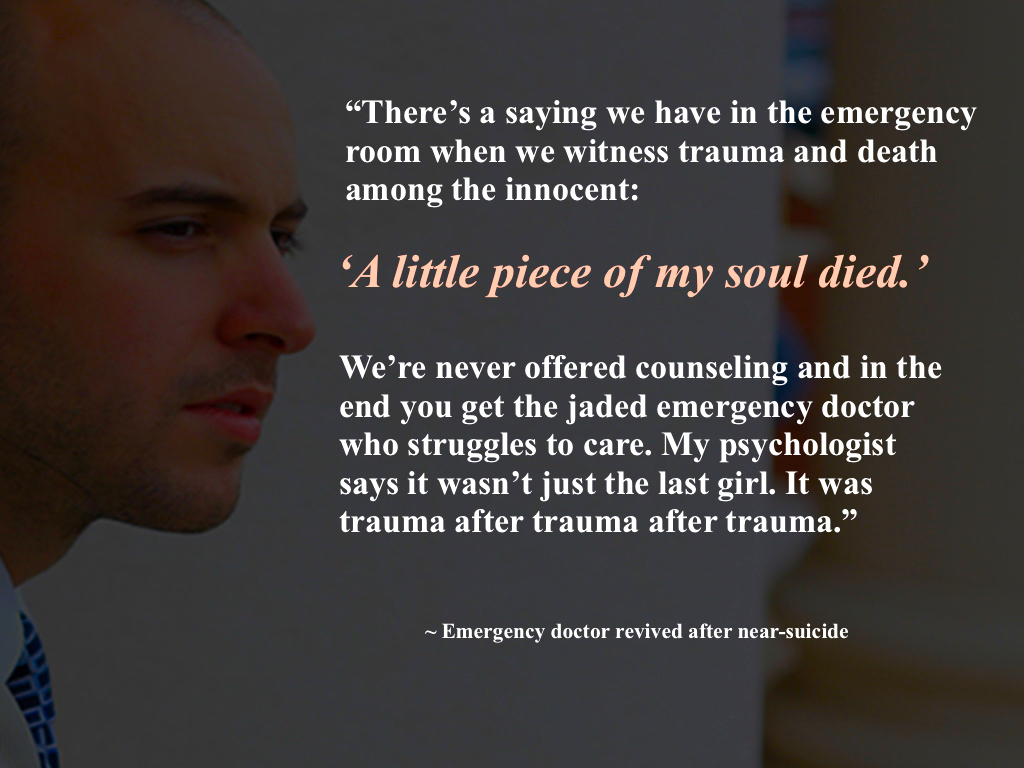Corresponding Author: Brit Trogen, MS (brit.trogen@nyumc.org).
Grace and I are trying to keep the vaccines minimal for Annie, if we can.”
Jeremy, the man sitting in front of me, is tall, slender, and politely tattooed. Despite appearing distinctly well rested, he’s every bit the new parent: exhilarated and, equally, terrified.
“There are just so many of them,” he says. “I was concerned about overloading her system.”
It’s a situation that many pediatricians encounter on a regular basis: a parent who is resistant to the idea of childhood vaccinations for a son or daughter. The only difference here is that Jeremy isn’t really an anxious parent but a standardized patient—an actor trained to re-create this scenario—and I’m not a physician but a medical student. We’re in the midst of an OSCE, an “objective structured clinical examination,” designed to train medical students in the real-life practice of medicine.
Sitting in a perfect replica of an examination room, wearing a white coat and stethoscope, I’m tasked with changing Jeremy’s mind. I launch into my carefully prepared talking points, explaining that vaccines are remarkably safe and effective, that they won’t overstrain his daughter’s immune system. The vaccine we’re discussing doesn’t even contain living virus, I tell him.
“It’s more like a fingerprint of the germ,” I explain. “When Annie’s body sees it, she learns to recognize that tiny fragment so she can attack it if she ever encounters it again.”
Later, in the debriefing, Jeremy reviews the case with me, providing lengthy feedback on everything from eye contact and posture to professionalism.
“I’ve done this scenario hundreds of times,” he says, finally, “and I’ve heard a lot of explanations of how vaccines work. I thought the fingerprint analogy worked well.”
This statement came almost as an afterthought, a high note to close the encounter. Yet as I left the examination, I began to wonder about the hundreds of other medical students stretching back through the years, each armed with their own individual script, each trying to accomplish the same task with different metaphors. Just how dissimilar were our explanations?
Curious, I asked around. One of my classmates had described the vaccine as a “personal trainer” for the immune system, “pumping up” the patient’s natural immunity. Another portrayed vaccination as a kind of insurance policy against future illness. In a case where we had all carefully memorized the same statistics, cellular pathways, and adverse effects, it occurred to me that our patient explanations seemed wildly, and perhaps unwisely, variable. What if, instead of a medley of vaccine analogies of varying efficacy, patients like Jeremy heard only tried and tested messages from the medical community? But not all metaphors are created equal. A vaccine is more analogous to an insurance policy than it is to, say, a bowl of petunias. Yet virtually no consideration is given in medical school, or in health care as a whole, to exactly which metaphors ought to be used. There seems to be a prevailing view that while physicians may, according to their tastes, use different figures of speech, one is not inherently better or worse than the next (or if it is, it’s impossible to know which is which). The study of oncologists, for example, found metaphors ranging in theme from militaristic (eg, cancer as an invading army), to sport themed (eg, treatment as a marathon), to agricultural (eg, stem cells as seeds), to animal inspired (eg, bone marrow as an elephant that never forgets). Should the framing of these important conversations be left entirely to the whims of individual physicians?
We implement evidence-based medicine, so why not evidence-based communication?
There will never be just one “right” way of explaining illness. Things like tone, gesture, cultural background, and personal experience will have at least as much influence over how someone interprets a given metaphor as the words themselves. In the absence of an evidence-based approach, however, physicians may be missing out on a powerful clinical tool or, worse, using metaphors that are unintentionally harmful or counterproductive in their long-term effect on patient behavior or public health.
Throughout medical school, much is made of the importance of using research to optimize decisions about patient care. When evidence shows that one treatment is more effective than another, physicians incorporate this knowledge into practice. We strive to make conscious, empirical decisions on everything from drug dosing and treatment modalities to medical education and health policy. We should be just as rigorous with our words.
A good idea. Perhaps we should compile a glossary of metaphors, not only for medical students, but residents and physicians. This is an effort for which I would gladly be editor.













